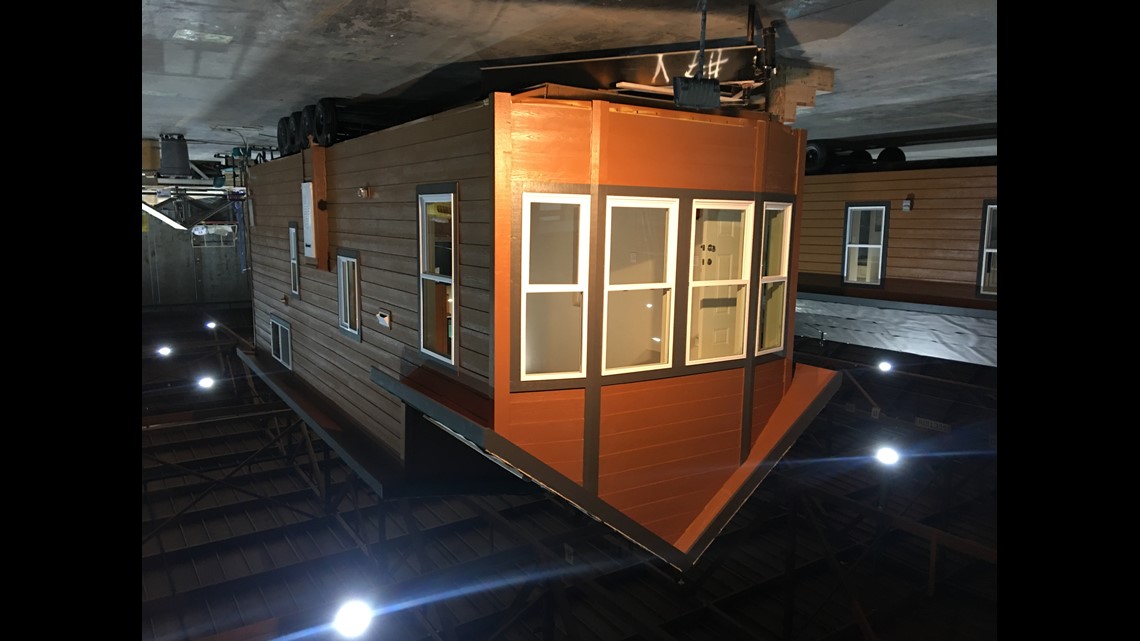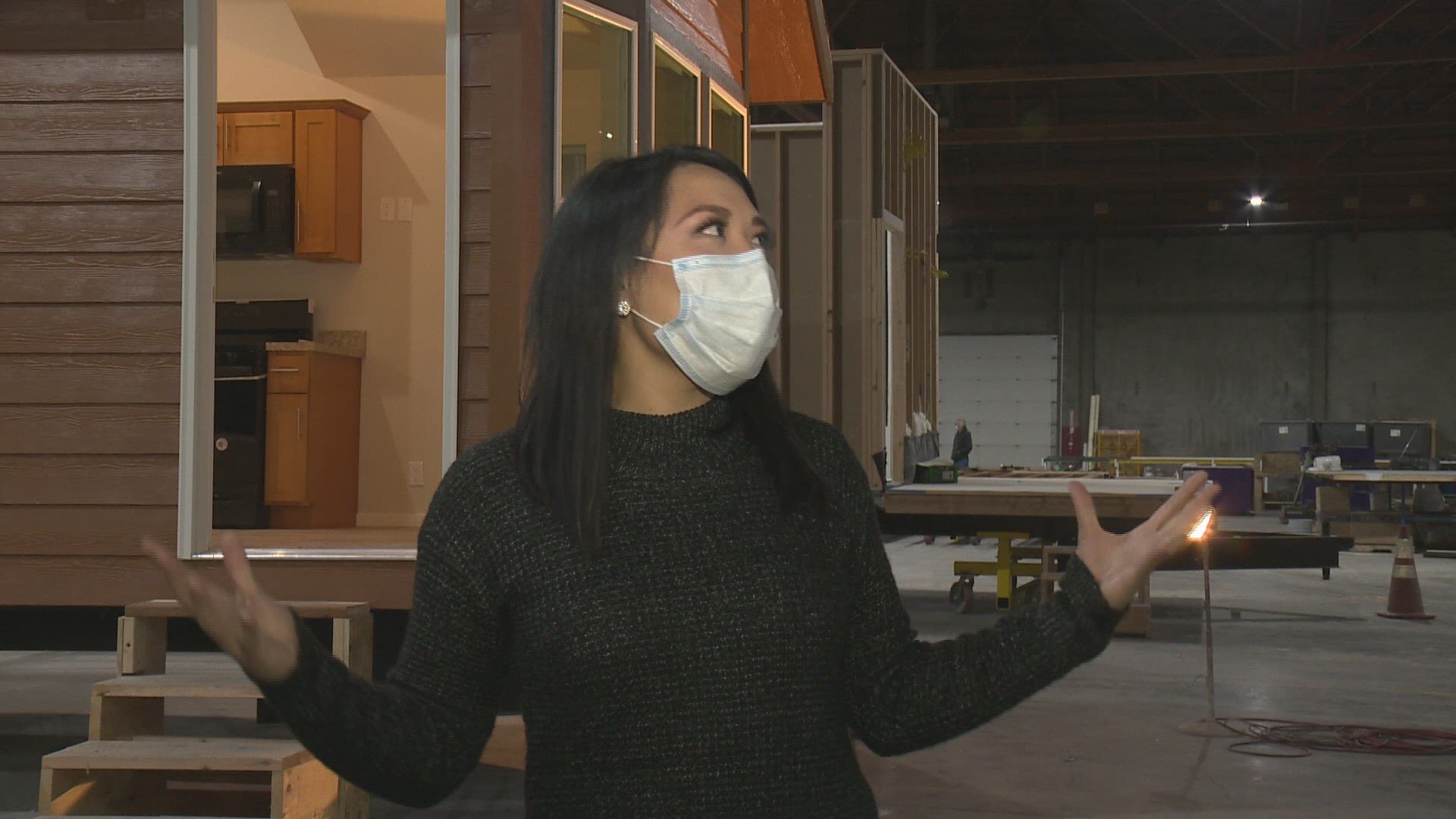SALEM, Ore. — There’s a big effort right now to help people who lost their home due to wildfires.
On Friday, local businesses and community members came together in northeast Salem to try to figure out how they could best help.
A group including community leaders toured a roughly 70,000 square foot warehouse where tiny homes are being made. The hope is that similar tiny homes will be able to help people who are displaced.
“This is a way to get them out of hotels, out of tents, out of the fairgrounds, into a shelter that’s built to the same quality and standards as a house, that’s affordable and in some cases portable,” said Jordan Truitt.
His family owns the warehouse and they’ve teamed up with the United Way of the Mid-Willamette Valley, International Housing Concepts, and Tiny Mountain Houses to try to bring tiny homes to people who lost their home in the fires.
“This is an opportunity for us to use the resources we have right here, to [get a] view from 10,000 feet by getting the right people into the room, into the warehouse to view the product, to see what the potential is,” said Truitt.
He said he started contemplating the idea through a partnership the Truitt family formed with United Way.
“We donated 33,000 square feet of warehouse space to the United Way for acceptance and distribution of the critical supplies that were needed by the evacuees,” Truitt said.
He says that was the immediate need, but those needs have started to shift. It wasn’t until they received a donation of 800 tents from Amazon that the long-term need became apparent, when each of those tents were distributed just as fast as they came in.
“What that did was highlight the greater need of what the ongoing problem would be, and that was housing,” said Truitt.
Truitt hopes tiny homes could be part of the solution.


“We’re geared up right now today. Not next year, not next month, we’re ready to roll right now,” said Ron Blair, the director of marketing for International Housing Concepts.
But before they can do anything, they want to have a clear idea of what’s needed. Lou Pereyra, owner of Tiny Mountain Houses said they have to figure out the type of tiny home that will work best for most families. Then he said the plan would be to start assembly line production, replicating the same type of tiny home to keep the cost down, and keep the workflow consistent and quick. In addition, the tiny homes would have to be cleared by city and state government.
“One of the challenges we’re going to run into of course is zoning. What your use is, what’s the style of home? Is it on a slab? Is it on a trailer? How are we gonna get them to the people who need them? So by bringing the right people to the table, which we’re trying to accomplish today, to get that dialogue going to get the homes that IHC is ready to build to get them out to the communities that need them the most,” said Truitt.
“There’s a lot of levels of acceptance that need to happen before we know what the heck we’re doing and that’s going to make us or break us,” Pereyra said.
“We can build almost anything out of this facility. We just need to know what it is. That really is what it boils down to,” he said.


This meeting of minds and tour of the warehouse to see the manufacturing process and tiny homes is the first step.
“The intention is to start that dialogue and get the ball rolling on the next steps of this phase,” said Truitt.
Because the effort is still in the beginning stages, it’s unclear how much out of pocket a family might have to pay. After losing everything, they may not have the means to pay. Truitt knows that and says they’re working to figure something out.
“Trying to source the right funding and the right sorts of financial institutions, the right nonprofits, the right organizations to get into place to help provide those services to people,” said Truitt.
Ultimately, the goal to build as many tiny homes as needed and quickly, for emergency relief.
“This is the long game. We are into the beginning phases of a very long process. As we’ve heard, the rebuilding of the canyon is going to take years,” Truitt said.
Organizers say at this point, they just need state and local government to step in to answer questions and cut the red tape so they can really get to work.
Among those in the tour group, was Jim Trett, mayor of Detroit. He said there’s already city code in place to allow for tiny homes. He said he thought the effort to bring tiny homes to people who need them is a great idea, especially because there are so many smaller lots in the City of Detroit.

